In the 1994 Academy Award-winning movie “Forest Gump,” as Forest (Tom Hanks) tells his life story on a bus bench to whoever happens to sit there, he fondly recalls happy times with his “most special friend” Jenny (Robin Wright), saying, "Jenny and me was like peas and carrots.” In the dairy industry, milk and cheese are inextricably linked as processors can’t make delicious cheese without fresh milk.
Yet, how much milk can be processed obviously depends on the size and scope of a plant’s operations. And Litchfield, Minn.-based First District Association’s (FDA) $200 million investment in new processing plants, equipment, and state-of-the-art automated technology was unveiled during a Sept. 18, 2021, ribbon-cutting ceremony that also celebrated the co-op’s milestone 100th anniversary.
— Zac McCann, cheese plant mgr.
Founded in 1921 as a dairy co-op that started out making butter and powder, FDA now is an independent dairy co-op owned by 650 dairy farm families that currently supplies 3 billion pounds of milk annually to produce cheese barrels (since 1975) in several flavors including the top-selling cheddar along with Gouda, Monterey Jack, and non-traditional Swiss barrels.
New state-of-the-art equipment and automated technology also is enabling FDA to ramp up production of its whey protein concentrate (WPC) and lactose powders.
Occupying six square city blocks, FDA’s 765,773-square-foot campus consists of, in order of how the milk is received, the following:
- An eight-bay, 15,000-square-foot raw milk Receiving Plant, aka Plant 8. New
- Milk Processing, Plant 3, separates the components of the raw milk, pasteurizes, standardizes, and is then sent to the cheese plant.
- The Cheese Plant & Cooler, at 104,860 square feet, is where the standardized milk is received into ten 85,000-pound cheese vats. It contains a three-story/tiered cheese belt — the largest in the world, according to the company — designed to produce 42,000 pounds of cheese an hour. It also has 14 high-capacity cheese towers and two state-of-the-art packaging lines (a line for barrels, a line for blocks). New
- Protein & Lactose Drying Plant & Packaging Plant, Plant 4, with an 11,244-square-foot addition, is for the new lactose plant commissioned in 2021. This is where Whey Protein Concentrate and lactose powders are dried and packaged. The powders from the two dryers then go to the packaging room for packaging into 50-pound bags or 2,000-pound totes. New
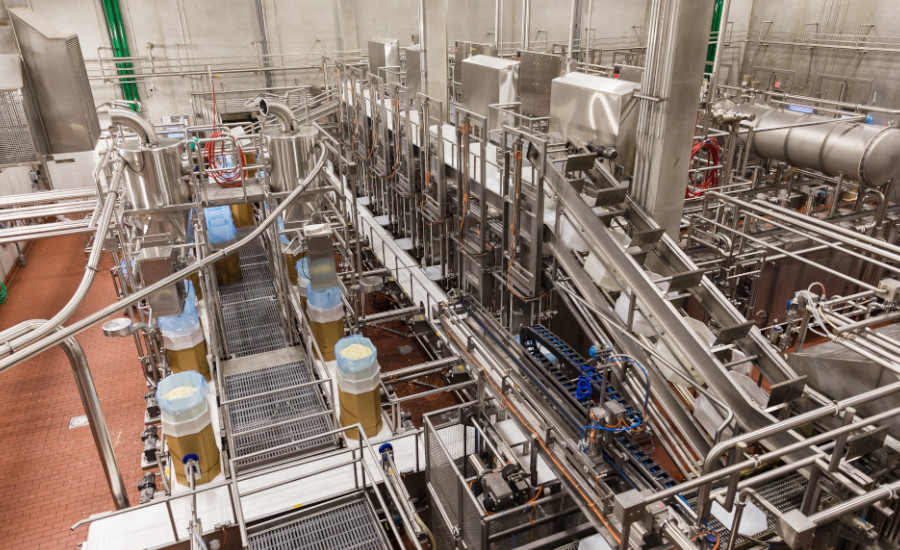
In mid-January, all decked out in a red smock suit and protective gear, Dairy Foods got a firsthand look at FDA’s cheesemaking operations with the help of FDA’s Cheese Plant Manager Zac McCann and Director of Manufacturing Shane Dill.
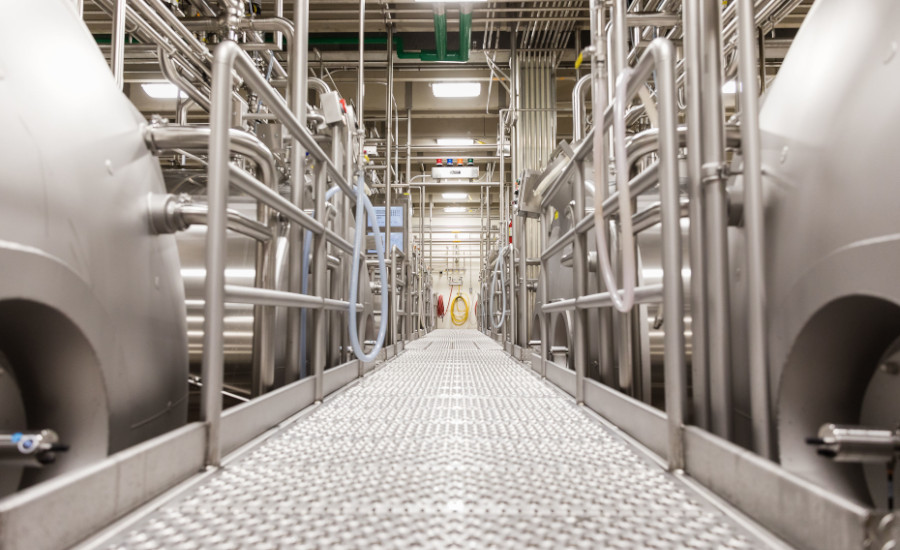
Noting that the cheesemaking process begins with milk, McCann explains that FDA uses around 20 different hauling companies for its milk delivery. Driving primarily within Minnesota from state line to state line, the semi-trailers operate within a three-hour radius to deliver milk to the upper Midwest Minnesota cheese processor.
“Cows never stop milking, so the big challenge is keeping the plant going 24/7 so that we never have a hiccup at our farm level with having to dump milk. That’s too precious of a commodity,” McCann states.
The cheesemaking journey
In simple terms, McCann explains the cheese processing steps: “First, our milk comes in and heads over to our milk processing plant. There, we are breaking down all the components of the milk, separating them out so we can standardize the cheese milk composition, and then send it to the cheese vat deck. From the vats the curd is pumped over to the three story cheese belt. Once the curd has completed its time on the cheese belt, is either packaged into 40-pound blocks or 500-pound barrels. In the cheese plant we will send our whey through a clarifier, at which point it gets sent over to the whey plant for it be further processed.”
With FDA for a little over a year, Dill oversees all facets of operations. “Plant reliability is a very high priority for First District,” he stresses. “There are five active plants and we had two plants that were shut down when we did the expansion. We’re working on getting those plants rebuilt to add further milk balancing options for the cooperative.”
FDA’s business in whey protein concentrate and lactose powders is expected to grow with the added investment. “We run a really clean process from the start and that provides a very high quality whey product,” Dill notes.
He explains that to make lactose, the protein is stripped out, leaving the permeate, which is condensed down and crystalized to make a lactose powder. “We can make around 150,000 pounds of lactose powder a day,” Dill says.
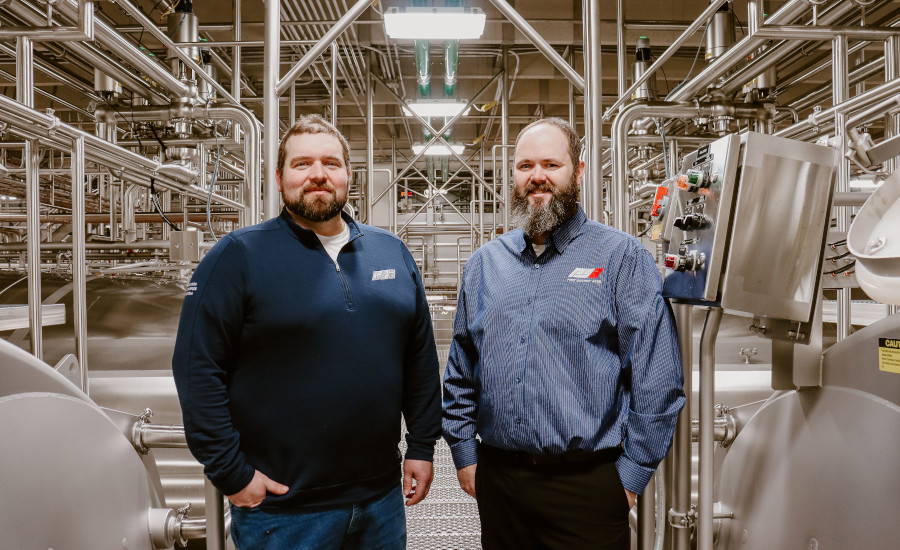
Highlights of FDA’s plant operations
- The eight-bay milk receiving facility allows up to 2,200 gallons of milk to be pumped every minute.
- There are 12 silos that each hold 70,000 gallons of raw milk.
- After milk is pasteurized, it is sent over to the cheese plant where it is held in ten recently installed 85,000-gallon vats.
- The three-story cheese belt, the world’s largest, is designed to produce 42,000 pounds of cheese an hour.
- 14 block towers produce 40-pound blocks of cheese, with 16 blocks made each minute.
- The barrel packaging room has the capacity to fill a 500-pound barrel of cheese in 43 seconds.
- The whey protein dryer can process 130,000 pounds of Whey Protein Concentrate 35% per day.
- The new lactose dryer is currently producing 150,000 pounds of powder per day. It has extra capacity built in to support future upgrades which include manufacturing Whey Protein Isolates.
The powders are being used in infant formula, snack foods, processed foods, and confectionary products, with 80% of its volume exported, he says. In the future, the company hopes to export its cheese.
FDA’s processing operations further accelerated with the 2021 opening of its new cheese plant and the installation of the largest cheese belt ever made, McCann notes.
At 160 feet long, the sheer size of the three-tiered stainless steel cheese belt is something to see. The system consists of: a DMM1 at the very top level; DMM2 middle level, and an SMC (salting/mellowing belt) at the lowest level. “We are running around 42,000 pounds of cheese an hour on that belt system,” McCann explains. “Cheddar varieties are No. 1 in terms of sales, and we’re producing around 5 million pounds of that particular SKU a week.
“When it comes to making the different types of cheese, a lot of it comes down to the cultures we put into the vats to make the cheese. Typically it would take around 5,000 pounds of milk to create a 500-pound barrel, but with our high concentration of milk, 2,800 pounds of milk will make a 500-pound barrel, which is 3.5 feet tall by 24 inches wide,” he continues, gesturing to a barrel.
Many of FDA’s customers are melting down the cheese to convert it into a powder, while others are shredding it or mixing it with other cheese, McCann states.
Dill points out that it’s not just the quality of FDA’s cheese or its new processing plants or equipment that are driving sales — new technology also is making it easier to innovate.
“Everything is fully automated. It's not like the older plant where you had to physically change valve positions, or turn on motors,” Dill explains. “It's automated to the point that there were a lot of ergonomics built into the system to prevent having to manually move 500-pound barrels or 40 pound blocks of cheese. It’s safer and faster.”
Quality & sustainability core to FDA’s mission
Quality, sustainability, and providing topnotch customer service are core to FDA’s business.
“We’ve invested in the business to ensure another 100 years and to help our customers with solutions to meet their needs,” Dill states. “FDA has always strived for quality and our focus is on sustainability within our processes so we’ve updated everything from receiving milk all the way to the loading dock.
“I just love the way the company is set up. It’s very prideful in its quality and the 100 years that got us here, he concludes. “Here in Litchfield, the people in the plant have a strong sense of ownership. This is like no other plant I’ve ever worked at before. I’m proud to be a part of it.”


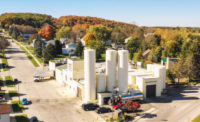
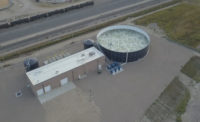
Raspberry-Frozen-Yogurt-Pops.jpg?height=200&t=1674519047&width=200)